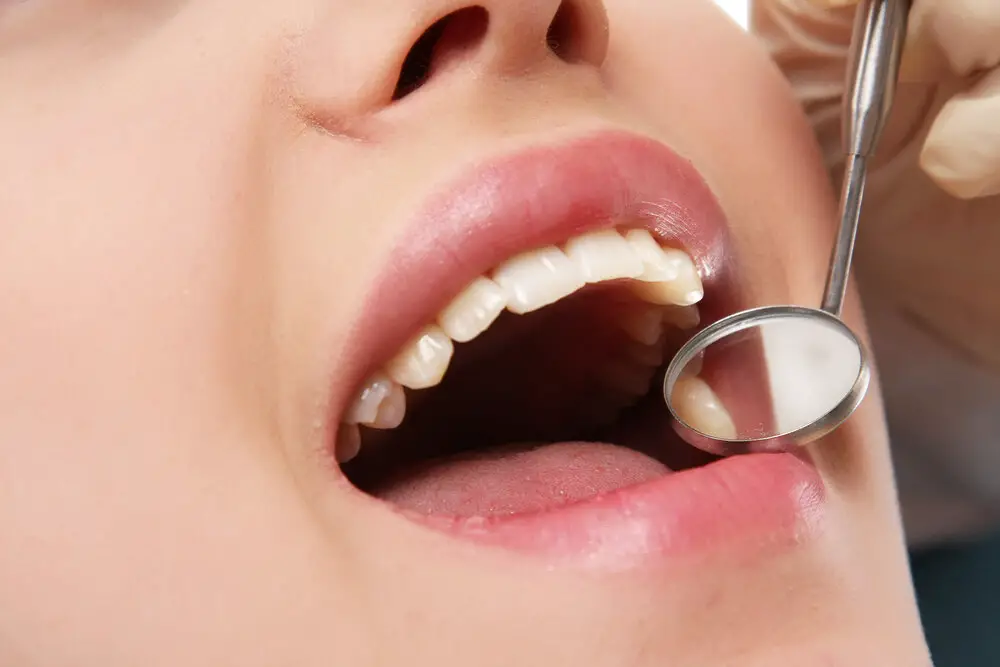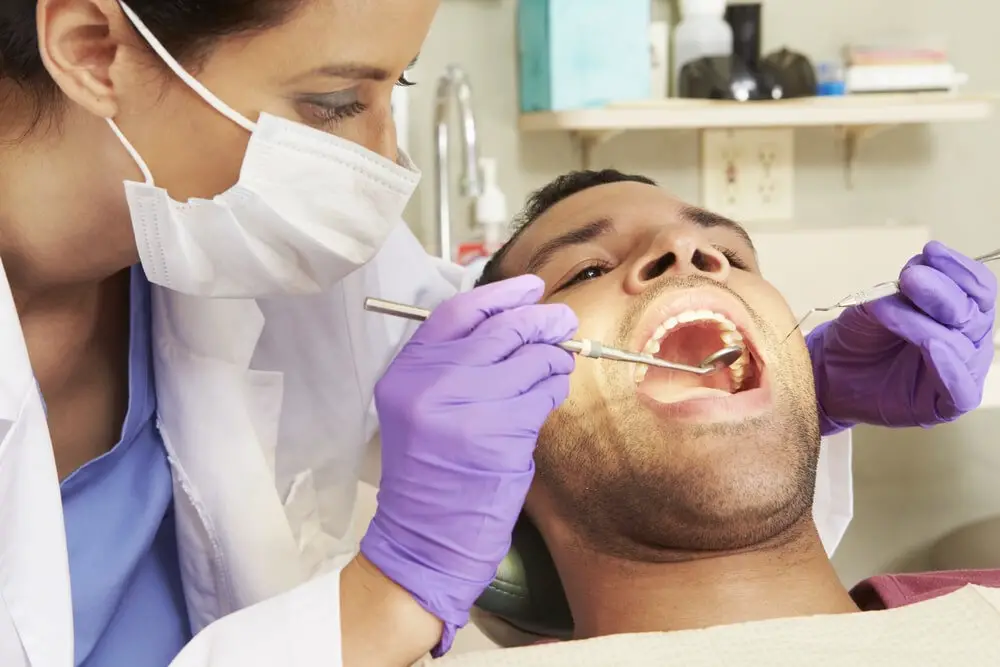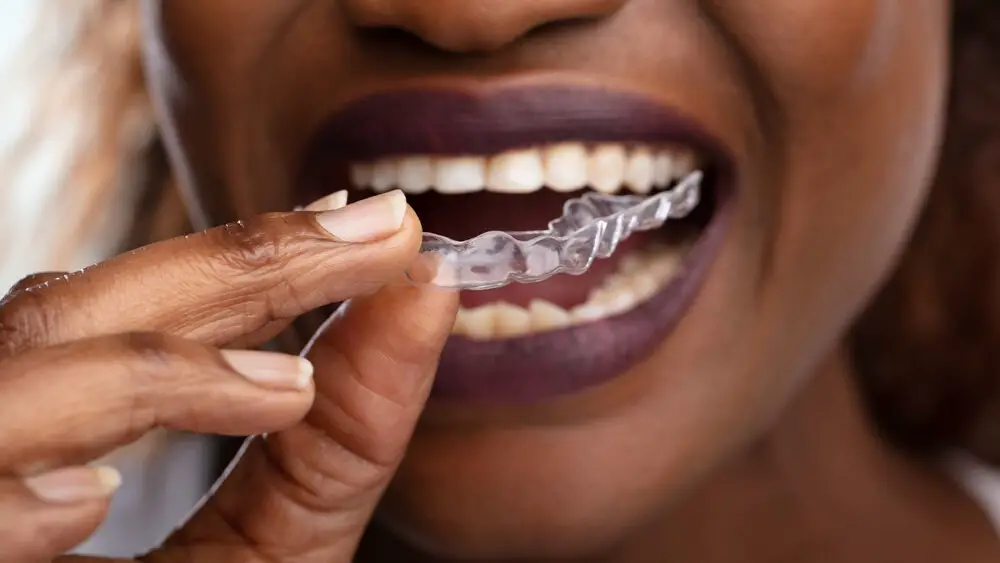Why Do Dogs Lick Each Other’s Teeth? The Fascinating Reason Behind This Bizarre Behavior

Dogs are known for their quirky and often unusual behaviors that leave us scratching our heads in confusion. One such peculiar habit is that of licking each other’s teeth, which can seem both bizarre and disgusting to us humans. However, this behavior holds a fascinating reason behind it that goes beyond mere grooming or affection. Understanding why dogs engage in this behavior can help us gain insight into their social lives and communicate with them better. Dogs are social animals that thrive on interactions with other members of their species. They communicate with each other through various means, including body language, vocalizations, and, surprisingly, even taste. Licking each other’s teeth is a part of this communication, and it serves as a way for dogs to exchange information about their health, diet, and social status. This behavior is not just limited to puppies or siblings; even adult dogs engage in it, and it is an essential part of their social bonding. By delving deeper into this fascinating behavior, we can learn a lot about how dogs interact with each other and the role that taste plays in their communication.
Dogs are social creatures and they interact with each other in many ways. One of the most bizarre behaviors that dogs exhibit is licking each other’s teeth. This behavior is a sign of affection and is a way for dogs to strengthen their bond with each other. It is also a way for dogs to communicate with each other. When a dog licks another dog’s teeth, it can detect any dental problems or health issues that the other dog might be experiencing. Additionally, this behavior helps to reinforce the pack hierarchy, with the dominant dog allowing the submissive dog to lick its teeth as a sign of respect. While this behavior might seem strange to humans, it is an important part of canine socialization and communication.
Observing dogs lick each other’s teeth can seem peculiar and even repulsive to humans. The behavior is unfamiliar, and the thought of putting one’s mouth in another animal’s mouth is unappealing to most people. Additionally, the act of teeth licking is not something that humans typically engage in, which adds to the strangeness of the behavior. However, what may seem bizarre to humans is actually a natural and important behavior for dogs. Through teeth licking, dogs are able to communicate and reinforce social bonds with each other, as well as maintain their hygiene and health.
Social Interaction

Social interaction is a vital aspect of a dog’s life. Dogs are social creatures and thrive on companionship and interaction with other dogs. When dogs interact with other dogs, they engage in a range of behaviors that serve different purposes. One of the most fascinating behaviors is licking each other’s teeth. This behavior may seem bizarre to humans, but it serves an important purpose for dogs. Licking each other’s teeth is a way for dogs to communicate and establish social bonds. It’s a form of greeting and a way to show affection and submission. Dogs use their sense of smell to communicate, and licking each other’s teeth is a way to transfer their scent. This scent exchange helps dogs recognize each other and establish familiarity. Dogs also use this behavior as a way to show submission to a more dominant dog. When a submissive dog licks the teeth of a dominant dog, it’s a way of acknowledging the other dog’s authority. This behavior helps maintain social order and prevent conflict. Overall, social interaction is essential for dogs, and licking each other’s teeth is just one of the many ways they communicate and establish social bonds.
Dogs are highly social animals that thrive in the company of others. They have a strong pack mentality and are known to form close bonds with their owners as well as other dogs. Their social nature is reflected in their behavior, such as their tendency to lick each other’s teeth. This behavior is not only a sign of affection and bonding, but it also serves a practical purpose. By licking each other’s teeth, dogs can remove food particles and other debris from their mouths, helping to maintain good oral hygiene. Furthermore, this behavior reinforces the social hierarchy within the pack, with dominant dogs often initiating the licking and submissive dogs accepting it. Overall, this behavior is just one example of the complex and fascinating social dynamics that exist within the world of dogs.
Licking is a fascinating behavior among dogs, and it is more than just a way to show affection. In fact, it is a form of communication that conveys a lot of information about the dog’s intentions and emotions. When dogs lick each other’s teeth, it is a sign of respect, submission, and trust. It is a way for them to establish and reinforce their social hierarchy and to build stronger bonds with their pack mates. Additionally, licking can also be a way for dogs to communicate their needs and desires, such as asking for food or attention. Overall, licking is a complex and important behavior in the world of dogs, and understanding its various meanings can help us better understand our furry friends and their social dynamics.
Teeth are an incredibly sensitive area for dogs, as they are crucial tools for chewing, biting, and playing. A dog’s teeth are made up of a complex system of nerves and blood vessels, which are highly sensitive to touch and pressure. When a dog licks another dog’s teeth, it may be a sign of affection or social bonding, but it can also indicate that the dog is experiencing discomfort or pain in their mouth. This behavior may also be an attempt to clean or groom the other dog’s teeth, which can help to prevent dental problems and maintain good oral hygiene. Overall, a dog’s teeth are an important part of their physical and emotional wellbeing, and should be cared for and monitored closely by their owners.
Grooming

Grooming is a common behavior among dogs. It involves the act of cleaning themselves or each other by licking, scratching, or biting. Through grooming, dogs can remove dirt, loose hair, and parasites from their coat. It also helps them to maintain good hygiene and social bonds with other dogs. In addition, grooming provides a form of relaxation and stress relief for dogs. They often groom themselves or each other after a meal, playtime, or a stressful situation. This behavior is particularly important for dogs living in packs, as it helps to establish and maintain their social hierarchy. Furthermore, grooming plays an important role in communication between dogs. For example, when one dog licks another dog’s teeth, it can signal submission or affection. It can also be a sign of respect or a way of showing appreciation for a higher-ranking dog. In some cases, dogs may lick each other’s teeth as a way of asserting dominance or marking their territory. Additionally, grooming can be a way to build trust and strengthen social bonds between dogs. It is an important behavior that allows dogs to communicate with each other and maintain healthy relationships within their social groups.
Licking is an important part of a dog’s grooming process, serving as a crucial tool for maintaining hygiene. Dogs have a natural instinct to keep themselves clean, and licking is one of the ways they do it. By licking each other’s teeth, dogs can remove food particles and debris that may have become lodged in their mouths. This helps prevent dental problems and bad breath, ensuring that their teeth and gums stay healthy. Additionally, the act of licking releases natural enzymes in a dog’s saliva, which can help kill harmful bacteria and promote healing of minor wounds or infections. So, while it may seem bizarre to us humans, dogs licking each other’s teeth is actually a vital part of their overall hygiene routine.
Along with their adorable wagging tails and wet noses, dogs have a reputation for having less-than-pleasant breath. However, this is not just a cosmetic issue. Dental hygiene is crucial for dogs’ overall health, and teeth cleaning is an essential part of that. By regularly cleaning your dog’s teeth, you can prevent gum disease, tooth loss, and even more severe health problems such as heart and kidney disease. Regular brushing or providing dental chews or toys can help remove plaque and tartar buildup, keeping your furry friend’s mouth fresh and healthy. So, the next time your dog licks another canine’s teeth, you can rest assured that their own teeth are clean and healthy.
Mutual grooming is a fascinating behavior among dogs, and it is one that strengthens the bonds they share. When dogs groom each other, they are not only keeping their coats clean and shiny, but they are also engaging in a social activity that reinforces their relationship. This behavior helps to build trust and promote cooperation among pack members, which is essential for survival in the wild. Additionally, mutual grooming provides an opportunity for dogs to express affection and demonstrate their social status within the group. By licking each other’s teeth, dogs are engaging in a form of grooming that is particularly intimate and serves as a way to connect on a deeper level. Overall, mutual grooming is an essential component of canine social behavior that plays a significant role in maintaining healthy relationships among pack members.
Instinctual Behavior

Instinctual behavior refers to actions that are innate and instinctive, rather than learned or acquired through experience. This type of behavior is often seen in animals, particularly in social species like dogs. Licking is one such instinctual behavior that dogs engage in. While it may seem bizarre to humans, licking is a common way for dogs to communicate with each other, and can serve a variety of different purposes. One reason that dogs may lick each other’s teeth is to establish social hierarchy. Just like in human societies, dogs have their own unique social structures, and they use a variety of different behaviors to communicate their place within the pack. Licking can be a way for dogs to show submission to more dominant members of the group, or to assert their own dominance over weaker individuals. Additionally, licking can be a way for dogs to strengthen their bonds with each other, by reinforcing social ties and creating a sense of unity within the pack. So while it may seem strange to us, licking is actually a very important part of canine social behavior.
Ancestral behavior in wild canines refers to the innate and instinctive behaviors that dogs have inherited from their wolf ancestors. These behaviors are deeply ingrained in their DNA and serve as survival mechanisms in the wild. One of these behaviors is licking, which has several purposes such as maintaining hygiene, showing affection, and communicating with other dogs. Wild canines would lick each other’s teeth to remove food particles and bacteria, which helped prevent dental diseases. This behavior has been carried over to domestic dogs, and even though they have access to dental care, they still engage in this behavior as a way to bond and show affection towards their fellow canine companions.
Puppies are adorable creatures that we often see playing around with their siblings. However, what we don’t know is that they learn crucial life lessons from their mother’s grooming behavior. A mother dog’s grooming behavior is not just a way to keep her pups clean, but it’s a way to teach them social skills too. When a mother licks and grooms her pups, she’s also teaching them how to communicate with each other. Puppies learn to read body language, and they also learn how to interact with others in the pack. This grooming behavior is crucial for the survival of the pack, and it’s fascinating to see how it plays such an essential role in shaping a puppy’s life.
Another possible explanation for why dogs lick each other’s teeth may be related to food sharing behavior. In the wild, dogs are pack animals that hunt and share food together. Licking each other’s teeth could be a way to check for leftover food particles and share any remaining scraps. This behavior may also be a way to reinforce social bonds within the pack and show submission to higher-ranking members. While domesticated dogs may not need to share food in the same way, the instinct to check for scraps and show submission to their human or canine family members may still be present.
Licking teeth is a common behavior among dogs that serves multiple purposes. One of the primary reasons is that it helps dogs maintain their oral hygiene by removing food particles and plaque buildup. Additionally, licking teeth can be a sign of submission and affection between dogs, as well as a way to establish dominance. Moreover, it can also be a form of communication in which dogs exchange information about their health, mood, and intentions. While this behavior may seem bizarre to humans, it is a natural and essential part of canine social behavior.
Understanding why dogs lick each other’s teeth can help us improve our relationships with our furry companions. This behavior is a natural instinct for dogs, and it serves several purposes. It helps them bond with their pack members, establish hierarchy, and communicate their intentions. By observing this behavior, we can learn more about how dogs interact with each other and better understand their social needs. This knowledge can help us create stronger bonds with our own dogs by providing them with the socialization and communication they need to thrive. Additionally, it can help us avoid misunderstandings and conflicts in our relationships with our furry friends. By being more aware of their behavior and needs, we can create a more harmonious and fulfilling relationship with our canine companions.
It is vital to observe and differentiate between normal and excessive licking behavior in dogs to ensure their well-being. While licking is a natural behavior for dogs, excessive licking can indicate underlying medical or behavioral issues. Normal licking behavior involves grooming, affection, and communication among dogs. However, excessive licking can lead to skin irritation, infection, and anxiety in dogs. Therefore, it is essential to identify the reasons behind excessive licking and address them promptly to prevent further complications. By understanding the difference between normal and excessive licking behavior, dog owners can provide their furry companions with the care and attention they deserve.
Conclusion

In conclusion, dogs are fascinating creatures that have unique ways of communicating with each other. One of these ways is through licking each other’s teeth. Although it may seem bizarre to us humans, this behavior serves a purpose for dogs. It is a form of social bonding, showing affection, and even a way to clean each other’s teeth. Dogs have evolved to have intricate social behaviors, and this behavior is just one example of how they communicate with their fellow canines. So the next time you see dogs licking each other’s teeth, remember that it’s not just a strange behavior, but rather a fascinating insight into their social interactions.






